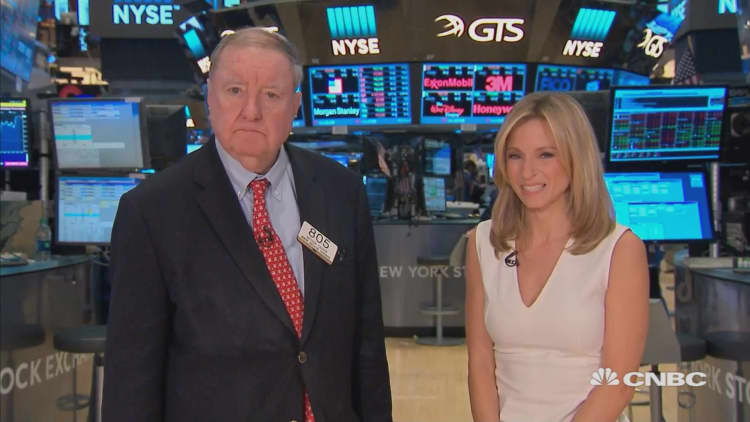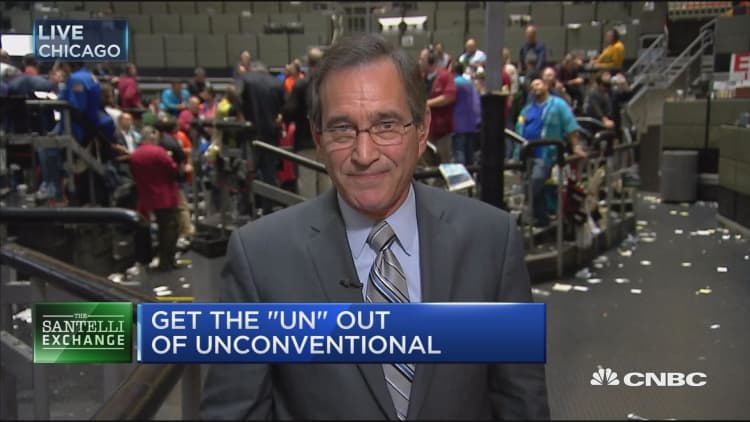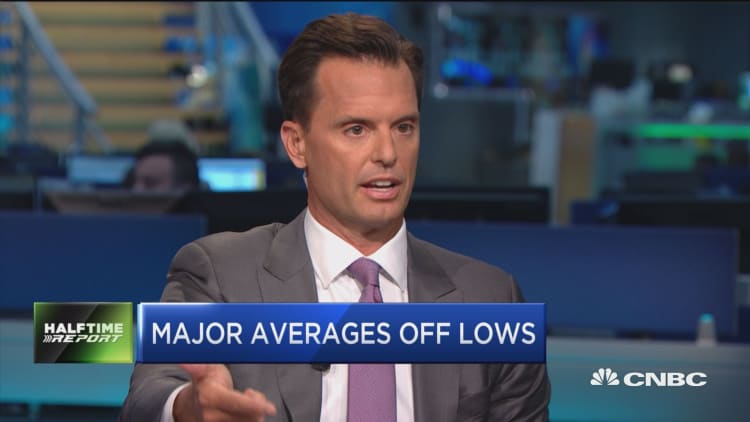


U.S. stocks closed lower on Friday, with utilities dropping more than 1 percent, as investors digested hawkish rhetoric from Federal Reserve officials and kept an eye on oil prices.
The Dow Jones industrial average briefly fell more than 100 points lower in midmorning trade, before closing about 45 points lower. McDonald's and Wal-Mart contributed the most losses on the index.
"I think we're just going to see a continuation of this, frankly," said Adrian Day, CEO of Adrian Day Asset Management. "There's not a strong conviction that stocks are cheap ... but there's no other game in town."
"I think the market just assumes the Fed is off the table," said Randy Warren, chief investment officer at Warren Financial Service. "There's just a lot of money on the sidelines, and that's not consistent with a top in the market."
The benchmark S&P 500 fell 0.15 percent, with utilities and telecommunications lagging. Energy, which fell 0.82 percent, also became the best-performing sector year to date, edging utilities.
The Nasdaq composite closed just below break-even, but posted a weekly gain of 0.1 percent, notching its first eight-week winning streak since 2010. The tech-heavy index is also up about 4 percent over the past month.
"The markets are going to be choppy ahead of the Jackson Hole speech," said Mark Heppenstall, CIO of Penn Mutual Asset Management. "I think the market is looking for more clarity."
San Francisco Fed President John Williams signaled support for a rate hike in the near future in a Thursday afternoon speech. "In the context of a strong domestic economy with good momentum, it makes sense to get back to a pace of gradual rate increases, preferably sooner rather than later," he said.
Market expectations for a rate hike in September were just 18 percent Friday and 43 percent for December, according to the CME Group's FedWatch tool.
"You have Williams saying September would be a good time to raise rates and everyone is a bit anxious," said Peter Cardillo, chief market economist at First Standard Financial.
Williams's speech was just the latest piece of hawkish rhetoric from top Fed officials. Earlier this week, New York and Atlanta Fed presidents William Dudley and Dennis Lockhart said a September rate hike may be on the table.
Nasdaq composite over past month
Meanwhile, U.S. crude settled 0.62 percent higher, at $48.52 a barrel, posting strong weekly gains. WTI also posted its first seven-day winning streak since March 2015 Weekly rig count data from Baker Hughes showed 10 rigs came online this week.
This has been a "big, big week for crude, and that can only be positive," said Art Hogan, chief market strategist at Wunderlich Securities. He also said the recent rise in oil prices has been triggered by talks of a production freeze, currency moves and, "after two years, we're closer reaching a balance in supply and demand."
U.S. oil rose more than 3 percent Thursday and posted its highest settlement since July 1.
There are no major data sets due Friday, excluding the rig count, and as earnings season comes to a close, investors are looking ahead to Fed Chair Janet Yellen's annual speech in Jackson Hole, Wyoming.
"To me, the market is trying to reassess rate hike expectations," said Wunderlich's Hogan.
The Dow and the S&P posted slight weekly losses amid a very narrow trading range. In fact, the S&P posted its 30th consecutive session without a 1 percent move on a closing basis on Friday, the longest streak since 2014.
"With one of the most popular vacation periods on the annual calendar now upon us, I do not anticipate any late summer surprises for equities. Dip buyers will therefore remain full engaged," said Jeremy Klein, chief market strategist at FBN Securities.
U.S. Treasurys traded mostly lower, with the two-year note yield near 0.75 percent and the benchmark 10-year yield around 1.58 percent. The dollar rose about 0.3 percent versus a basket of currencies, but still recorded a weekly loss.
Overseas, European stocks mostly fell, with the Stoxx 600 index slipping 0.81 percent. In Asia, stocks rose modestly, but the Nikkei 225 recorded a weekly loss of 2.2 percent.
Major U.S. Indexes
The Dow Jones industrial average closed 45.13 points lower, or 0.24 percent, at 18,552.57, with Wal-Mart the biggest laggard and Nike leading advancers.
The fell 3.15 points, or 0.14 percent, to close at 2,183.87, with utilities leading seven sectors lower and information technology the top riser.
The Nasdaq fell 1.77 points, or 0.03 percent, to end at 5,238.38.
The CBOE Volatility index (VIX), widely considered the best gauge of fear in the market, traded higher, near 11.4.
About nine stocks declined for every five advancers at the New York Stock Exchange, with an exchange volume of 834.14 million and a composite volume of 3.032 billion at the close.
Gold futures for December delivery settled $11 lower at $1,346.20 per ounce.
High-frequency trading accounted for 49 percent of August's daily trading volume of about 6.3 billion shares, according to TABB Group. During the peak levels of high-frequency trading in 2009, about 61 percent of 9.8 billion of average daily shares traded were executed by high-frequency traders.


